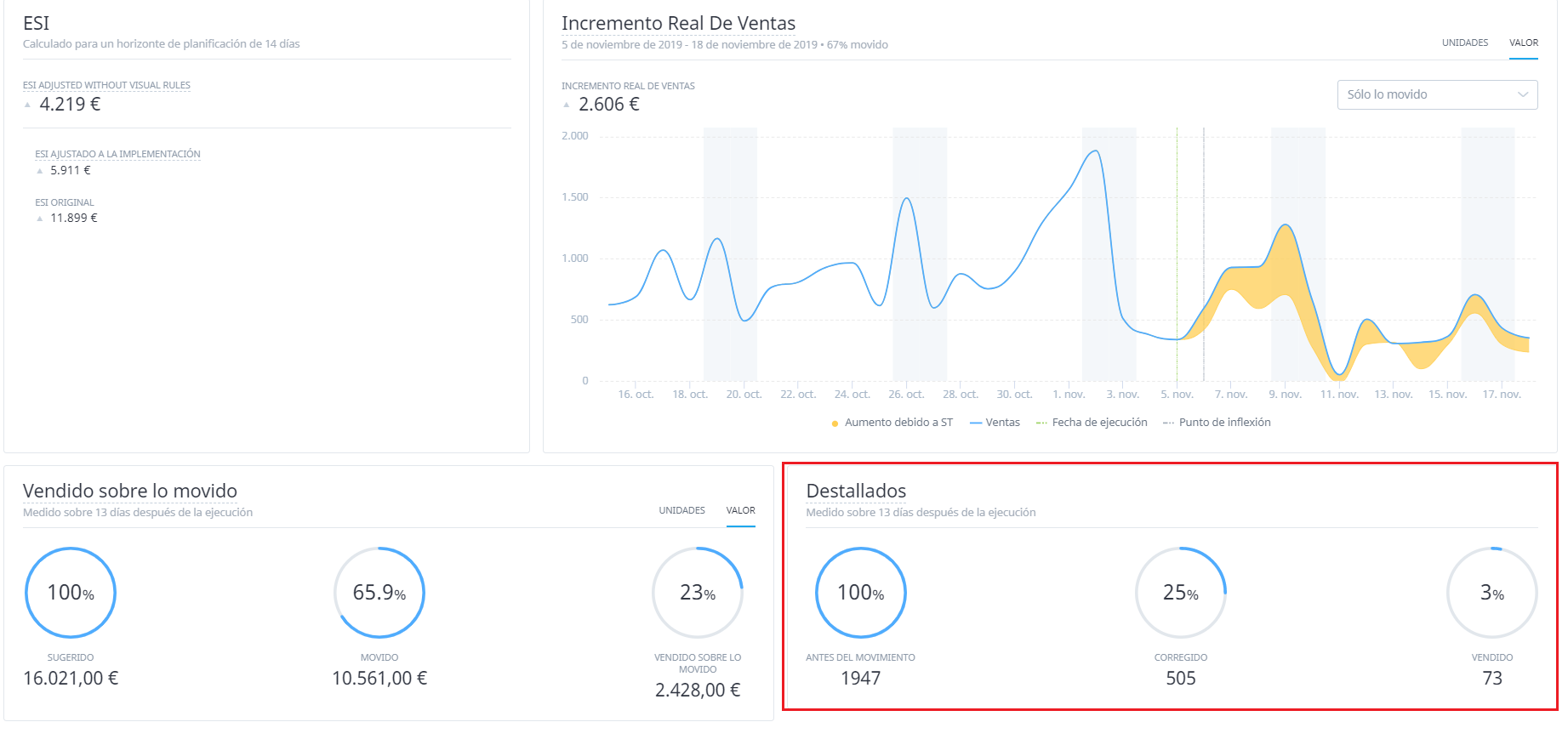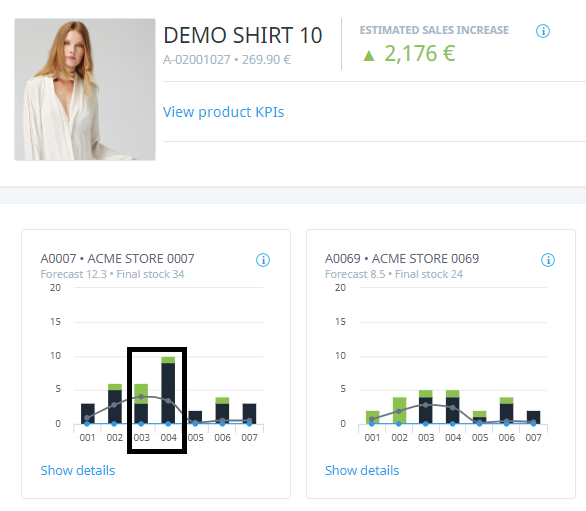Leftovers and overstocks are generally situations that stores should avoid as far as possible.
In the case of detailed ones, the product is not displayed for sale due to the scarcity of available units or the low proportion of sizes covered. When there are overstocks, the store has an overload of product and, therefore, has more product to sell than expected.
The objective of movements between stores is to avoid both situations as much as possible,
but sometimes this is not viable due to the current stocks and historical sales of the product, as well as the stores involved. In fact, overstocks are mainly a consequence of the elimination of details. It is always better to have some overstock for a product in a store where rapid turnover is expected than to leave a stock in a store where the product will not be displayed and, therefore, will not be sold.
Detailed
Loose units found in a store but not displayed; its potential sales without movement between stores are 0. The purpose of movement between stores is not only to increase the probability of sales, but also to eliminate highlights and recover units that were not going to be displayed.
The “Actual Sales Increase” tab indicates the number of units sold that had been detailed before the movement between stores.

Overstocks
One of the objectives of movements between stores is that each product-store combination corresponds, as far as possible, with the demand forecast curve, which is represented by a line in the image. To distribute the available stock in the best possible way, so that demand is satisfied and overstocks are avoided, stores with stock levels higher than their demand forecast curve will send products to stores with stock levels lower than theirs. However, the nature of the scenario launched does not always allow the curve to be followed.

.png?height=120&name=Nextail-logo-rojo%20(5).png)